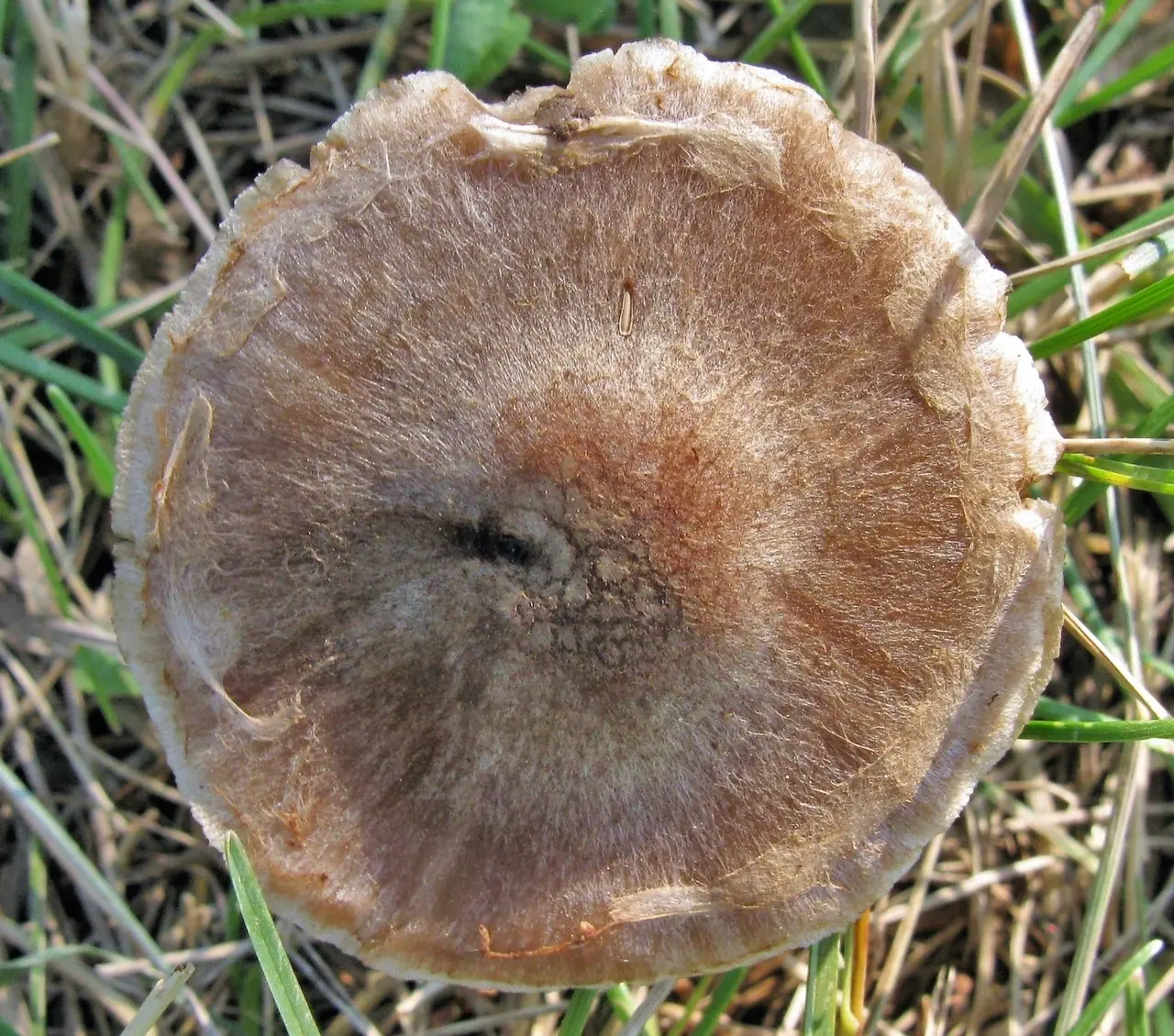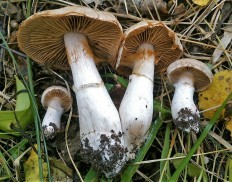Dull cobweb (Cortinarius saturninus)
- Division: Basidiomycota (Basidiomycetes)
- Subdivision: Agaricomycotina (Agaricomycetes)
- Class: Agaricomycetes (Agaricomycetes)
- Subclass: Agaricomycetidae (Agaricomycetes)
- Order: Agaricales (Agaric or Lamellar)
- Family: Cortinariaceae (Spiderwebs)
- Genus: Cortinarius (Spiderweb)
- Type: Cortinarius saturninus (Dull Webbed)
- Saturn cobweb
- Saturnine agaricus Fries (1821)
- Cortinarius living together P. Karst. (1879)
- Gomphos saturninus (Fries) Kuntze (1891)
- Hydrocybe saturnina (Fries) A. Blytt (1905) [1904]
- Cortinarius subsaturinus Rob. Henry (1938)
- Willow curtain Rob. Henry (1977)
- Cortinarius cohabiting var. urban (2004) [2003]

Current title – Saturnian curtain (Fries) Fries (1838) [1836–38], Epicrisis systematis mycologici, p. 306
According to the intrageneric classification, the described species Cortinarius saturninus is included in:
- Subspecies: Telamonia
- Section: Saturnini
Taxonomy
Cortinarius saturninus is an extremely variable species and is most likely a species complex; this explains the large number of its synonyms.
head mushroom 3–8 cm in diameter, conical, bell-shaped or hemispherical, then flattened with a slightly tucked and wavy margin, sometimes with a wide tubercle, hygrophanous, fibrous at first, later smooth; silver-shiny, yellow-brown, reddish-brown to chestnut-brown, sometimes with a violet tint; with characteristic silvery-white fibers from the remains of the bedspread along the edge, which remain there for a long time and form a kind of “rim”.
In wet weather, the hat is sticky, dark brown; when dried, it is pale ocher, yellowish-orange, ocher-brown, sometimes forming radial stripes in the form of rays.

Private bedspread – white, cobwebbed, quickly disappearing.
Records adhering to the stem, wide, pale yellow, yellowish or reddish brown to grayish brown, sometimes with a purple tint at first, quickly becoming dark brown, smooth, with a whitish and occasionally serrated edge.

Leg 4–8 (10) cm high, 0,5–1,2 (2) cm wide, solid, rigid, cylindrical with a slightly thickened base or sometimes with a small “onion”; longitudinally fibrous with a rapidly disappearing girdle or annular zone, at the base with a felt coating; whitish, later ocher, grayish-brown, grayish-violet, often purple in the upper part.

Pulp creamy, with grayish, brown or purple (especially at the top of the stem) shades.
Smell and taste
The smell of the fungus is unexpressed or rare; the taste is usually mild, sweet.
Споры 7–9 x 4–5 µm, elliptical, moderately warty; The size of the spores is very variable, making it difficult to accurately determine.


spore powder: rusty brown.
Chemical reactions
KOH on the cuticle (cap skin) – brown to blackish; on the pulp of the fruiting body – watery light brown or brown.
Exicat
Exicatum (dried copy): hat is dirty brown to blackish, the leg is gray.
Cobweb dull is found in deciduous forests under willows, poplars, aspens, birch, hazel and other deciduous trees, and possibly spruce; usually in groups, often in urban areas – in parks, on wastelands, on roadsides.
From July to October.
Inedible; according to some reports, may contain toxins.
Several similar types can be distinguished.

Urban cobweb (Cortinarius urbicus)
It can also grow, as the name implies, within the city; differs in a hat with a grayish tint and dense pulp, as well as a dual smell.
Two-shaped cobweb (Cortinarius biformis) – smaller, with a small amount of fibers on the fruiting body, with a pointed and slightly ribbed cap along the edge, sometimes with brick-red, rather rare plates in youth; has a more slender and longer stem with ocher-yellow bands and a characteristic narrow purple zone at the top of it, grows in coniferous forests (under spruce and pine), does not form aggregations.
Chestnut cobweb (Cortinarius castaneus) – somewhat smaller, distinguished by the characteristic dark chestnut color of the cap with a rapidly disappearing cortina and lilac-reddish hues of young plates and the upper part of the stem; grows in forests of any type.
Forest cobweb (Cortinarius lucorum) – larger, differs in more saturated violet tones in color, a plentiful whitish bedspread, leaving a felt rim along the edge of the cap and a shell at the base of the leg; sparse notched-grown plates, yellow-brown flesh at the base of the leg and intense purple hues of the pulp at the top of it; grows, as a rule, under aspens.
Cortinarius deceiving var. dark blue – much darker, with a smaller tubercle or without it; found in dry deciduous forests, especially under birches, sometimes under other deciduous trees; according to some sources, it has the smell of cedar wood.
Cortinarius frowned – much smaller this alpine species grows singly in the highlands under willows.
Cortinarius living together – outwardly very similar, found only under willows; many authors consider it as a synonym for the dim cobweb (Cortinarius saturninus).
Photo: Andrey.











Bangladesh select vanguard Mama dukan 01853505913 metadam photo